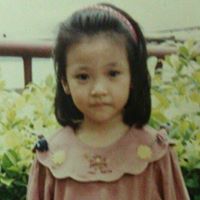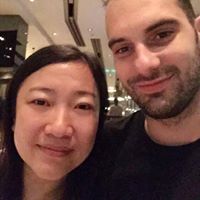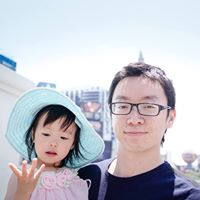Ning M Yang
age ~54
from Princeton, NJ
- Also known as:
-
- Ning Vang
- Phone and address:
- 406 Terhune Rd, Princeton, NJ 08540
Ning Yang Phones & Addresses
- 406 Terhune Rd, Princeton, NJ 08540
- 14 Bronson Way, Skillman, NJ 08558
- Plainsboro, NJ
- Alhambra, CA
- 800 Benton St, Iowa City, IA 52246
- Pasadena, CA
- Ames, IA
Work
-
Position:Professional/Technical
Education
-
Degree:Associate degree or higher
Ranks
-
Licence:Virginia - Authorized to practice law
-
Date:2004
Us Patents
-
Method And Apparatus For Continuous Analyte Monitoring
view source -
US Patent:20120283538, Nov 8, 2012
-
Filed:May 6, 2011
-
Appl. No.:13/102390
-
Inventors:Jefferson Rose - Culver City CA, US
Ashwin K. Rao - Northridge CA, US
Ning Yang - Northridge CA, US
Chia-Hung Chiu - Granada Hills CA, US
Ying Luo - Stevenson Ranch CA, US
Rebecca K. Gottlieb - Culver City CA, US -
Assignee:MEDTRONIC MINIMED, INC. - Northridge CA
-
International Classification:A61B 5/1468
-
US Classification:600347
-
Abstract:Embodiments of the invention provide analyte sensors and sensor systems such as amperometric glucose sensors used in the management of diabetes as well as optimized methods for monitoring analytes using such sensors and sensor systems.
-
Method And/Or System For Multicompartment Analyte Monitoring
view source -
US Patent:20130109940, May 2, 2013
-
Filed:Oct 26, 2011
-
Appl. No.:13/282096
-
Inventors:Ning Yang - Northridge CA, US
Rebecca K. Gottlieb - Culver City CA, US
Keith Nogueira - Northridge CA, US
Xiaolong Li - Granada Hills CA, US
Bradley Liang - Bloomfield Hills MI, US -
Assignee:MEDTRONIC MINIMED, INC. - Northridge CA
-
International Classification:A61B 5/1468
-
US Classification:600347
-
Abstract:Subject matter disclosed herein relates to monitoring and/or controlling levels of an analyte in bodily fluid. In particular, estimation of a concentration of the analyte in a first physiological compartment based upon observations of a concentration of the analyte in a second physiological compartment may account for a latency in transporting the analyte between the first and second physiological compartments.
-
Method And/Or System For Multicompartment Analyte Monitoring
view source -
US Patent:20130109942, May 2, 2013
-
Filed:Feb 3, 2012
-
Appl. No.:13/365406
-
Inventors:Ning Yang - Northridge CA, US
Rebecca K. Gottlieb - Culver City CA, US
Keith Nogueira - Northridge CA, US
Xiaolong Li - Granada Hills CA, US
Bradley Liang - Bloomfield Hills MI, US
Brian T. Kannard - Los Angeles CA, US -
Assignee:Medtronic Minimed, Inc. - Northridge CA
-
International Classification:A61B 5/145
A61M 5/168 -
US Classification:600365, 600309, 604 66
-
Abstract:Subject matter disclosed herein relates to monitoring and/or controlling levels of an analyte in bodily fluid. In particular, estimation of a concentration of the analyte in a first physiological compartment based upon observations of a concentration of the analyte in a second physiological compartment may account for a latency in transporting the analyte between the first and second physiological compartments.
-
Polar Plot To Represent Glucose Sensor Performance
view source -
US Patent:20130109943, May 2, 2013
-
Filed:May 9, 2012
-
Appl. No.:13/467728
-
Inventors:Rebecca K. Gottlieb - Culver City CA, US
Ying Luo - Stevenson Ranch CA, US
Ning Yang - Northridge CA, US
James Geoffrey Chase - Christchurch, NZ -
Assignee:Medtronic Minimed, Inc. - Northridge CA
-
International Classification:A61B 5/145
-
US Classification:600365
-
Abstract:Disclosed are methods, apparatuses, etc. for providing a visual expression of the performance of one or more blood glucose sensors. In one particular example, a relative comparison of a rate of change sensor blood glucose and a rate of change in reference blood glucose may be expressed in a polar plot or graph. The polar plot or graph may then be generated onto a visual medium.
-
Application Of Electrochemical Impedance Spectroscopy In Sensor Systems, Devices, And Related Methods
view source -
US Patent:20130331673, Dec 12, 2013
-
Filed:Feb 27, 2013
-
Appl. No.:13/778559
-
Inventors:MEDTRONIC MINIMED, INC. - , US
Ning Yang - Los Angeles CA, US
Rajiv Shah - Rancho Palos Verdes CA, US -
International Classification:A61B 5/053
A61B 5/145
A61B 5/1495
A61B 5/1473 -
US Classification:600347, 600345
-
Abstract:A diagnostic Electrochemical Impedance Spectroscopy (EIS) procedure is applied to measure values of impedance-related parameters for one or more sensing electrodes. The parameters may include real impedance, imaginary impedance, impedance magnitude, and/or phase angle. The measured values of the impedance-related parameters are then used in performing sensor diagnostics, calculating a highly-reliable fused sensor glucose value based on signals from a plurality of redundant sensing electrodes, calibrating sensors, detecting interferents within close proximity of one or more sensing electrodes, and testing surface area characteristics of electroplated electrodes. Advantageously, impedance-related parameters can be defined that are substantially glucose-independent over specific ranges of frequencies. An Application Specific Integrated Circuit (ASIC) enables implementation of the EIS-based diagnostics, fusion algorithms, and other processes based on measurement of EIS-based parameters.
-
Calibration Of Optical Glucose Sensors Based On Electrochemical Glucose Sensors
view source -
US Patent:20220354394, Nov 10, 2022
-
Filed:Jul 7, 2022
-
Appl. No.:17/859427
-
Inventors:- Northridge CA, US
Xiaolong Li - Porter Ranch CA, US
Mike C. Liu - Walnut CA, US
Yuxiang Zhong - Arcadia CA, US
Ning Yang - New York NY, US -
International Classification:A61B 5/145
A61B 5/1495
A61B 5/1459
A61B 5/1473
A61B 5/00
A61M 5/142
A61M 5/172
A61B 5/1455
A61B 5/1468
G01N 21/00
G01N 27/416
G01N 33/49
G01N 33/66
G01N 21/84
G01N 27/27
C12Q 1/00
G01N 21/59
G01N 27/327 -
Abstract:The disclosed techniques include obtaining a first signal generated by an electrochemical glucose sensor and a second signal generated by an optical glucose sensor, and obtaining a glucose value indicative of a user's blood glucose level, where the glucose value and the second signal are obtained at different times. The disclosed techniques further cause calculating a mapped value for the second signal based on the first signal, and calibrating the mapped value of the second signal based on the glucose value.
-
Glucose Sensor System
view source -
US Patent:20210386335, Dec 16, 2021
-
Filed:Aug 27, 2021
-
Appl. No.:17/458643
-
Inventors:- Northridge CA, US
Xiaolong Li - Porter Ranch CA, US
Mike C. Liu - Walnut CA, US
Yuxiang Zhong - Arcadia CA, US
Ning Yang - Los Angeles CA, US -
International Classification:A61B 5/145
A61B 5/1495
A61B 5/1459
A61B 5/1473
A61B 5/00
A61M 5/142
A61M 5/172
A61B 5/1455
A61B 5/1468
G01N 21/00
G01N 27/416
G01N 33/49
G01N 33/66
G01N 21/84
G01N 27/27
C12Q 1/00
G01N 21/59
G01N 27/327 -
Abstract:Methods and systems for sensor calibration and sensor glucose (SG) fusion are used advantageously to improve the accuracy and reliability of orthogonally redundant glucose sensor devices, which may include optical and electrochemical glucose sensors. Calibration for both sensors may be achieved via fixed-offset and/or dynamic regression methodologies, depending, e.g., on sensor stability and Isig-Ratio pair correlation. For SG fusion, respective integrity checks may be performed for SG values from the optical and electrochemical sensors, and the SG values calibrated if the integrity checks are passed. Integrity checks may include checking for sensitivity loss, noise, and drift. If the integrity checks are failed, in-line sensor mapping between the electrochemical and optical sensors may be performed prior to calibration. The electrochemical and optical SG values may be weighted (as a function of the respective sensor's overall reliability index (RI)) and the weighted SGs combined to obtain a single, fused SG value.
-
Methods And Systems For Improving The Reliability Of Orthogonally Redundant Sensors
view source -
US Patent:20210161439, Jun 3, 2021
-
Filed:Feb 12, 2021
-
Appl. No.:17/175146
-
Inventors:- Northridge CA, US
XIAOLONG LI - Porter Ranch CA, US
MIKE C. LIU - Walnut CA, US
YUXIANG ZHONG - Arcadia CA, US
NING YANG - New York NY, US -
International Classification:A61B 5/145
A61B 5/1495
A61B 5/1459
A61B 5/1473
A61B 5/00
A61M 5/142
A61M 5/172
A61B 5/1455
A61B 5/1468
G01N 21/00
G01N 27/416
G01N 33/49
G01N 33/66
G01N 21/84
G01N 27/27
C12Q 1/00
G01N 21/59
G01N 27/327 -
Abstract:Methods and systems for sensor calibration and sensor glucose (SG) fusion are used advantageously to improve the accuracy and reliability of orthogonally redundant glucose sensor devices, which may include optical and electrochemical glucose sensors. Calibration for both sensors may be achieved via fixed-offset and/or dynamic regression methodologies, depending, e.g., on sensor stability and Isig-Ratio pair correlation. For SG fusion, respective integrity checks may be performed for SG values from the optical and electrochemical sensors, and the SG values calibrated if the integrity checks are passed. Integrity checks may include checking for sensitivity loss, noise, and drift. If the integrity checks are failed, in-line sensor mapping between the electrochemical and optical sensors may be performed prior to calibration. The electrochemical and optical SG values may be weighted (as a function of the respective sensor's overall reliability index (RI)) and the weighted SGs combined to obtain a single, fused SG value.
Lawyers & Attorneys

Ning Yang - Lawyer
view sourceLicenses:
Virginia - Authorized to practice law 2004
Resumes

Ning Yang
view source
Senior Manager, It Security Operations
view sourceLocation:
Princeton, NJ
Industry:
Information Technology And Services
Work:
Weil, Gotshal & Manges Llp
Senior Manager, It Security Operations
Liquidhub Jun 2011 - Aug 2012
Director
Parsons Corporation Jul 2009 - Jun 2011
Senior Manager
Dell 1998 - 2009
Senior Application Manager
Beijing Hitachi Control Systems Jul 1995 - Jul 1996
Engineer
Senior Manager, It Security Operations
Liquidhub Jun 2011 - Aug 2012
Director
Parsons Corporation Jul 2009 - Jun 2011
Senior Manager
Dell 1998 - 2009
Senior Application Manager
Beijing Hitachi Control Systems Jul 1995 - Jul 1996
Engineer
Education:
Rutgers University 2003 - 2008
Master of Business Administration, Masters, Business Management, Business, Finance Iowa State University 1998
Master of Science, Masters Iowa State University 1996 - 1997
Masters, Electrical Engineering Tsinghua University 1990 - 1995
Bachelor of Engineering, Bachelors, Electrical Engineering
Master of Business Administration, Masters, Business Management, Business, Finance Iowa State University 1998
Master of Science, Masters Iowa State University 1996 - 1997
Masters, Electrical Engineering Tsinghua University 1990 - 1995
Bachelor of Engineering, Bachelors, Electrical Engineering
Skills:
Digital Marketing
Web Analytics
Crm
Business Intelligence
Knowledge Management
Business Process Design
Integration
Application Development
Business Analysis
Strategy
Leadership
Program Management
Vendor Management
Software Development
Project Management
Sharepoint
It Service Management
Microsoft Sql Server
Management
It Strategy
It Management
Consulting
Cloud Computing
Application Architecture
Customer Relationship Management
Web Analytics
Crm
Business Intelligence
Knowledge Management
Business Process Design
Integration
Application Development
Business Analysis
Strategy
Leadership
Program Management
Vendor Management
Software Development
Project Management
Sharepoint
It Service Management
Microsoft Sql Server
Management
It Strategy
It Management
Consulting
Cloud Computing
Application Architecture
Customer Relationship Management
Languages:
English
Mandarin
Mandarin
Certifications:
Comptia Security +
Comptia
Comptia

Ning Yang
view sourceWork:
United States

Ning Yang
view sourceSkills:
Microsoft Excel

Ning Yang
view source
Ning Yang
view source
Ning Yang
view sourceSkills:
Microsoft Excel
Microsoft Office
Microsoft Office

Ning Yang
view sourceLocation:
United States
Name / Title
Company / Classification
Phones & Addresses
Owner
Golden River Consulting Inc
Business Consulting Services · Business Consulting, Nec, Nsk
Business Consulting Services · Business Consulting, Nec, Nsk
28 Independence Dr, Whippany, NJ 07981
President
Goldlink Technology, Inc
228 W Vly Blvd, Alhambra, CA 91801
President
Amh Enterprises, Inc
228 W Vly Blvd, Alhambra, CA 91801
President
Aden Enterprises, Inc
228 W Vly Blvd, Alhambra, CA 91801
Managing
Velomind LLC
Computer Database Consulting
Computer Database Consulting
2218 San Gabriel Blvd, Rosemead, CA 91770
25819 Wordsworth Ln, Santa Clarita, CA 91381
25819 Wordsworth Ln, Santa Clarita, CA 91381
INTEGRA ACUPUNCTURE ASSOCIATES, INC
President
HEADWIN LOGISTICS CORP
Transportation Services
Transportation Services
841 Washington St, El Segundo, CA 90245
1003 E Pne Ave, El Segundo, CA 90245
1003 E Pne Ave, El Segundo, CA 90245
President
NPT INTERNATIONAL INC
10816 Lower Azusa Rd, El Monte, CA 91731
Vehicle Records
-
Ning Yang
view source -
Address:14 Bronson Way, Skillman, NJ 08558
-
Phone:(609)9590230
-
VIN:WBAPK5G59BNN28761
-
Make:BMW
-
Model:3 SERIES
-
Year:2011
Classmates

Lehigh University, Bethle...
view sourceGraduates:
Ning Yang (2008-2012),
Karen Thompson (1983-1987),
Robert Jones (1948-1952)
Karen Thompson (1983-1987),
Robert Jones (1948-1952)

Ning Yun Yang
view source
Xiao Ning Yang
view source
Tzu Ning Yang
view source
Ning Yang
view source
Ning Yang
view source
Ning Yang
view source
Ning Yang
view source
Ning Yang
view sourceYoutube
Myspace
News

Exotic physics phenomenon is observed for first time
view source- But the observations only worked in Abelian systems, or those in which gauge fields are commutative that is, they take place the same way both forward and backward in time. In 1975, Tai-Tsun Wu and Chen-Ning Yang generalized the effect to the non-Abelian regime as a thought experiment. Neverthele
- Date: Sep 05, 2019
- Category: Science
- Source: Google

China Celebrates Author Mo Yan's Nobel
view source- worlds population has, won a tiny number of Nobels, and until now, none that were welcomed by the regime. Several Chinese have been honored with the prize after moving abroad, including Chinese-American physicists Chen-Ning Yang and Lee Tsung-Dao and novelist Gao Xingjian, who is a French citizen. Tw
- Date: Oct 11, 2012
- Source: Google
Googleplus

Ning Yang
Work:
Fangyi&Artists - Dancer (2011)

Ning Yang
Education:
QUT

Ning Yang

Ning Yang

Ning Yang

Ning Yang

Ning Yang

Ning Yang
Flickr
Plaxo

Ning Yang
view sourceGet Report for Ning M Yang from Princeton, NJ, age ~54














